One of the most unexpected benefits of the modern internet is the encyclopedic release of digital reproductions of art-works, to any and everyone with a computer.
Suddenly the visual languages of the world—new and old, historic and informal—along with its timeless images that have been sequestered, hidden, scattered in the academic nooks and crannies of the world—are accessible to international public domain and extending the definition of a museum far beyond its physical walls.
This phenomena is notable in its own right, but what is truly new is that the art is not just accessible to one and all, it is also unchained from its time-bound meanings, often academically protected by historic or religious narrative. Now anyone with even rudimentary computer skills can participate with the world of art images which can be re-used, mixed or matched in new contexts, and to any purpose, sacred or profane.
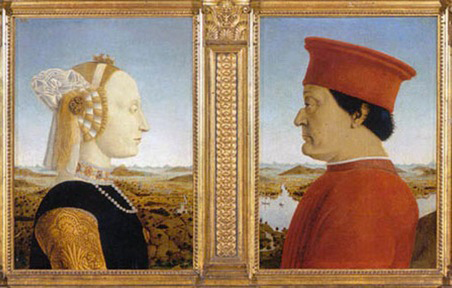
Fortunately my art student years in the fifties gave me a jump-start on the future, when I immersed myself in the new visual thinkers like Buckminster Fuller and André Malraux. It was Malraux’s work The Voices of Silence that foresaw the coming revolution of the time-less context of art. Later, supported by the innovative art history education required of every studio graduate student at the University of Iowa, I found my own spiritual home in the humanistic awakening of art known as the Italian Renaissance.
What was it about Florence Italy in the 15th century that was in many ways more inspirational to me than the contemporary art of my time? To illustrate my interest, I have chosen two portraits of the Duke and Duchess of Urbino painted by Piero della Francesca in 1465 (Figure 1).
Piero was not only a painter and muralist, he also wrote the definitive treatise on perspective. The portraits shown here clearly exemplify the brilliant new confluence called the Renaissance—a meeting of science, art, and a new role for the secular individual (both the artist and the new rulers) as a psychological force of creativity. In my view the layers of confluence that Piero gathered together in his innovative work are:
- a continuity of composition organized as a complex flat pattern (the medieval modality from centuries of illustrated books) and still the most basic visual vocabulary of the human eye;
- the use of official portraiture to give secular people a status heretofore only awarded to religious or empirical personages (e.g., the profile borrowed from Roman coinage), as well as implying wealth (the clothing, jewelry and hair ornament) as the secular source of power, even God’s favor (the birth of capitalism).
- the arrival of the first system for representing objects in a space on a flat surface (known as linear perspective) Piero was a scholar of spatial geometry, and used it in this case to demonstrate the secular ruler’s ownership of a larger world, in concept as well as fact.
- the awakening definition of the individual artist as a psychological and intellectual presence, who uses the medium of art to invent a narrative of secular humanism (e.g. accurate portraiture) outside the religious or classical formats of Italian art up until that time.
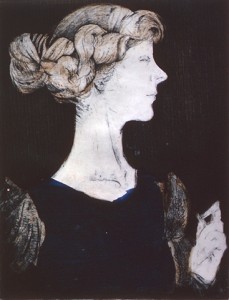
Engraving was also the first print medium used as personal communication in the Renaissance. For myself, engraving was the first printmaking technique my graduate school mentor, the artist Mauricio Lasansky insisted that we master in order to ground us (literally) in the physical roots of ‘print’-making. In my years living in Florence it seemed to me the perfect medium to join Piero’s time beyond just intellectual information, by actually working in the Renaissance manner. So I was inspired to create the two prints (Figures 2 and 3 ), engraved copperplate portraits of my first wife Jean Cochran, done in the early 60s’s.
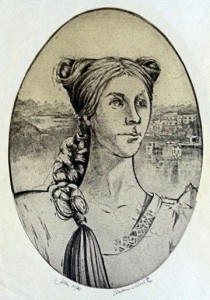
In the modern age the term printmaking has been broadly expanded since the coming of the high-speed commercial press and now the computer-generated print. But for me, I still look for the direct physical presence of the hand of the artist that gives substance to the actual work of art before my eyes.
If you would like to know more about the hand-made print, I invite those of you reading this to visit my September 2015 exhibit of fifty years of my small travel etchings, at the Rancho Linda Vista Barn Gallery in Oracle (September 1 to 30th). Go to Rancho Linda Vista’s website for directions. The gallery is open from 1 to 6 pm Saturdays and Sundays.
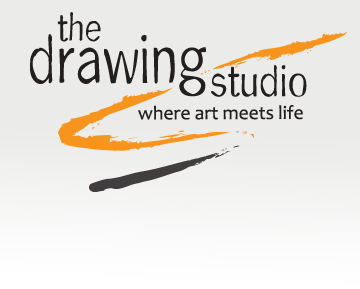
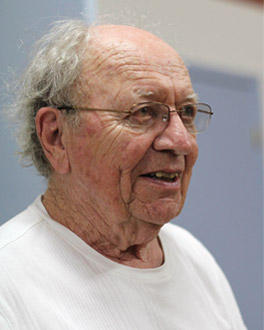
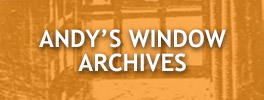
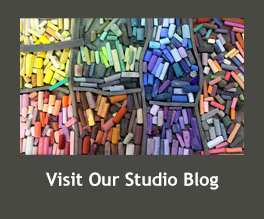
2 Responses to The Renaissance as Inspiration: Piero della Francesca and Me